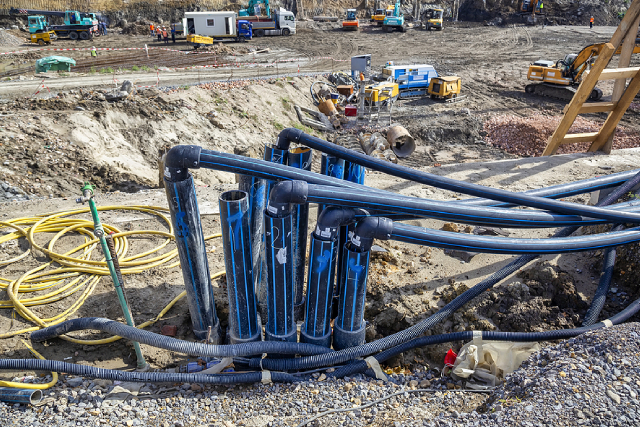5 Things To Consider When Selecting A Submersible Pump

Submersible dewatering pumps remove water, sludge, and slurry in construction, mining, and quarrying applications.
As COVID-19 continues to disrupt industries worldwide, construction managers and engineers are under growing pressure to enhance efficiency throughout their sites. They may make significant benefits by utilising the proper equipment for the task. That is why finding the correct specification for a dependable submersible pump can be critical.
Read on to learn about the primary considerations when selecting a submersible pump.
1. Properties of the substance you are pumping
The first factor to examine is the type of liquid being pumped since this significantly influences the pump used.
The overall composition, the concentration and size of suspended particles, and the pH level, temperature, and chemical content of the liquid, are all crucial aspects to consider.
Is it, for example, fine-particle water or a much heavier fluid, and how aggressive is the media?
2. What is your energy source?
An electric pump will be the best possible option if mains energy is available in most circumstances. The easiest, most energy-efficient, and most cost-effective way is to use an electric submersible pump which provides tremendous power in light and small designs.
Consider a pump whose motor and starter are equipped with integrated electrical protection against variable voltage, phase failure, and human error if the site is distant and prone to a fluctuating mains supply.
3. Definition of fluid
When choosing the perfect submersible dewatering pump to use, you have to consider the definition of the fluid that you are pumping. There are typically 3 classifications – drainage/clean water, sludge, and slurry.
Drainage or clean water containing tiny particles, such as clay or sand, has a solid weight of 10% and particle sizes up to 1.27 cm in diameter.
Sludge is a dense combination of solids and liquids that includes by-products of manufacturing activity and mud. It has a solid weight of around 40%, with particle sizes as big as 5.08 cm in diameter.
Slurry is a semi-liquid made up of a mixture of silt and fine materials like cement, coal, or manure. It has a solid weight of around 70% and particle sizes of up to 6.35 cm in diameter.
Slurry pumps, which are specifically built for managing corrosive and abrasive media, are best suited to handle larger solids concentrations. If the liquid is highly corrosive, ensure the pump is built to last and has safety measures like toughened, wear-resistant parts and uncongested impellers. A sludge pump will be more suitable if the fluid to be handled contains materials smaller than 5 cm.
4. Distance and elevation
Another consideration to note is the distance and elevation that the fluid has to be pumped. How high does the fluid have to be pumped, and how far does it have to travel?
Pumps must overcome gravity resistance and loss of friction. The more water that needs to be pushed over a longer distance, the more friction is generated, resulting in the loss of pump pressure. This will affect the pump's pressure, which is essential to operate effectively and reliably.
You should consider a submersible pump if the suction lift required for dewatering with a surface pump is greater than roughly 7 metres. It is designed to be immersed entirely and relies on the closeness and pressure of the surrounding water to help fluid passage via the hose, using less energy to do so. Check the manufacturer's official pump curve, which plots head height vs flow rate, to ensure it comprises the appropriate duty point before specifying.
5. Capacity requirements
The flow demand, or how much liquid has to be carried and how rapidly, is one of the most significant performance variables. A pump with a maximum flow rate of 138 m3/h may, for example, remove water from a 36 m3 pool in 15 minutes. A pump with a flow rate of 350 m3/h would, on the other hand, drain the pool in just 6 minutes.
The pump used should be able to handle the flow needs with the capacity to cope with changes in water level and adaptability to meet the demands of different locations for the greatest value and efficiency. An over-specified pump capable of handling a significantly larger flow capacity is excessively costly and does not give the most cost-effective option. A pump that is under-specified, on the other hand, will struggle to convey the media and will wear out more rapidly, resulting in a reduced life duration.
Conclusion
Engineers will be able to pick the most appropriate pump for the task and achieve optimal performance by carefully considering the liquid being pumped and the physical requirements of the application, such as flow, elevation, and distance the fluid travels.
To be sure, you should always seek the advice and recommendation of professionals when selecting a submersible pump in Singapore. Some would even recommend custom pumps with many benefits and advantages over ready-made pumps. With the correct information at hand, you can ensure that the pump you choose matches its intended purpose.

